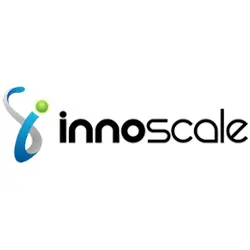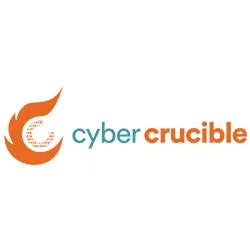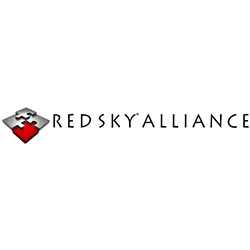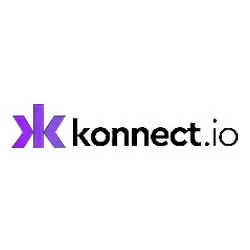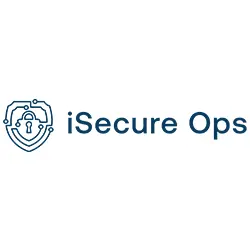As organizations increasingly adopt generative AI (GenAI), the risk of data exposure and expanded attack surfaces has surged, according to Gartner Predicts 2025: Managing New Data Exposure Vectors (28 January 2025). Gartner highlights the critical need for security and risk management (SRM) leaders to address the complexities of securing unstructured and semistructured data, reduce insider risks, and proactively identify data exposure vectors. TRaViS Attack Surface Management (TRaViS), a cloud-based External Attack Surface Management (EASM) platform, is uniquely positioned to help organizations meet these challenges. This article explores how TRaViS aligns with Gartner’s strategic planning assumptions and recommendations, guiding users to success in a GenAI-driven data security landscape.

Addressing the Shift to Unstructured Data Security
Gartner Prediction: By 2026, 75% of organizations running GenAI initiatives will reprioritize their data security efforts, shifting spending from structured to unstructured data security initiatives.
Gartner emphasizes that the adoption of GenAI is driving a focus on unstructured data—such as text, images, and videos—used to train and deploy AI models. This shift poses challenges for SRM leaders, as traditional data security platforms (DSPs) designed for structured data struggle to address the nuances of unstructured data security.
TRaViS Solution: TRaViS proactively addresses this shift through its comprehensive suite of features tailored to secure digital assets, including those containing unstructured data. The Asset Classification feature categorizes assets into levels like Red (critical systems with sensitive data) and Amber (internal systems with sensitive information), enabling organizations to prioritize security for assets hosting unstructured data. By identifying and classifying assets based on sensitivity, TRaViS ensures that sensitive unstructured data used in GenAI applications is monitored and protected.
The Domain Scanner and Google Hacking capabilities further enhance unstructured data security by discovering exposed assets, such as configuration files or public-facing documents, that may contain sensitive unstructured data. These tools use continuous scans and search engine analysis to detect publicly exposed assets, reducing the risk of unintended data leaks. Additionally, TRaViS’s Exposed API Keys feature monitors public repositories and search results for credential leaks, which are often linked to unstructured data like environment files (.env) used in GenAI workflows.
Guiding Success: TRaViS aligns with Gartner’s recommendation to invest in specialized controls for unstructured data. Its fast data classification, continuous monitoring, and exposure detection capabilities empower organizations to adapt their security strategies to the growing importance of unstructured data. By providing actionable insights and automated scans, TRaViS helps SRM leaders stay ahead of regulatory requirements and maintain a competitive advantage in leveraging GenAI securely.
Reducing Insider Risks with Real-Time Detection and Remediation
Gartner Prediction: By 2027, organizations incorporating intent detection and real-time remediation capabilities into data loss prevention (DLP) programs will realize a one-third reduction in insider risks.
Gartner notes that traditional DLP tools, reliant on static rules, often fail to detect evolving insider risks, particularly with complex data access patterns in GenAI applications. The integration of intent detection and real-time remediation is critical to proactively address these risks and reduce false positives.
TRaViS Solution: TRaViS’s proactive approach to insider risk mitigation aligns seamlessly with this prediction. The Darknet Intelligence feature monitors darknet sources for credential dumps and data breaches, providing early threat detection that helps identify potential insider risks before they escalate. By analyzing patterns and assessing impacts, TRaViS delivers actionable threat intelligence, enabling SRM leaders to respond swiftly.
The CVE Analysis feature enhances visibility into vulnerabilities that insiders could exploit, matching scan findings with Common Vulnerabilities and Exposures (CVE) data from trusted sources like the National Vulnerability Database (NVD). It prioritizes risks by severity and provides step-by-step remediation instructions, reducing the window of opportunity for insider threats. Additionally, the TRaViS Score offers a holistic view of an organization’s security posture, incorporating factors like vulnerability presence and exposure levels, which helps SRM leaders identify risky configurations that could be exploited internally.
TRaViS’s integration capabilities with systems like Security Information and Event Management (SIEM) and custom APIs further support real-time remediation. By correlating data from multiple sources, TRaViS reduces false positives and enables sophisticated responses, such as passive alerting or step-up authentication, without disrupting workflows.
Guiding Success: TRaViS supports Gartner’s recommendation to integrate behavioral and intent analytics into DLP programs. Its continuous monitoring, automated alerts (via email and dashboard), and granular remediation actions empower organizations to shift from reactive to proactive security postures. By reducing insider risks through dynamic detection and response, TRaViS helps organizations comply with data protection regulations and minimize the financial and reputational costs of breaches.
Promoting Safe GenAI Experimentation to Uncover Risks
Gartner Prediction: By 2027, 40% of security teams will promote experimentation with GenAI to uncover data security risks associated with GenAI tool adoption.
Gartner’s 2024 Data Security in the Age of AI Advancements Survey reveals that 56% of organizations are piloting or implementing GenAI use cases, with 21% of cybersecurity leaders encouraging joint experiments with business teams to proactively manage risks. However, only 14% of leaders effectively balance data protection with business enablement, underscoring the need for guided experimentation.
TRaViS Solution: TRaViS facilitates safe GenAI experimentation by providing tools to evaluate and secure new use cases. The Domain Intelligence and Domain Scanner features allow organizations to assess the security of new digital assets, such as websites or applications deployed for GenAI experiments (e.g., newapp.example.com). By scheduling recurring scans, TRaViS ensures continuous monitoring of these assets, identifying vulnerabilities or misconfigurations that could expose sensitive data.
The Google Hacking capability detects exposed assets, such as login pages or administrative interfaces, that may arise during GenAI experimentation. This helps cybersecurity leaders establish guardrails by identifying risky access points early. TRaViS’s Exposed API Keys feature is particularly valuable for GenAI use cases, as it detects credentials or configuration files inadvertently exposed in public repositories, a common risk when teams experiment with new tools.
TRaViS’s user-friendly dashboard and exportable reports (in formats like PDF and CSV) foster collaboration between cybersecurity and business teams. These reports compile findings from multiple sections, such as Darknet Intelligence and CVE Analysis, enabling blameless postmortems to discuss what went well and identify security lapses. The platform’s role-based access control (RBAC) ensures that only authorized users access sensitive data, aligning with Gartner’s recommendation to establish strict access controls for experimentation.
Guiding Success: TRaViS empowers organizations to follow Gartner’s recommendation to evaluate use cases for experimentation while establishing guardrails. By providing tools to monitor user behavior, detect risks, and share actionable insights, TRaViS helps cybersecurity leaders pilot high-impact use cases with trusted business units. This approach ensures that GenAI experimentation drives business value while proactively mitigating data security risks.
Meeting Gartner’s Recommendations for a Decade-Long Strategy
Gartner recommends preparing for a decade-long period of GenAI-driven data security objectives by allocating budgets to unstructured data security, investing in real-time DLP controls, and facilitating guided GenAI experimentation. TRaViS’s comprehensive feature set and user-centric design make it an ideal partner for achieving these goals.
- Budget Allocation for Unstructured Data Security: TRaViS’s Asset Classification, Domain Scanner, and Exposed API Keys features provide specialized controls for unstructured data, addressing Gartner’s call to invest in tools for fast data classification and exposure detection. Its cloud-based platform ensures scalability, allowing organizations to adapt to growing data volumes over the decade.
- Real-Time DLP Controls: The Darknet Intelligence, CVE Analysis, and TRaViS Score features incorporate advanced analytics and real-time remediation, reducing insider risks by a third, as predicted by Gartner. Integration with SIEM and automated alerts ensures dynamic responses to evolving threats.
- Guided GenAI Experimentation: TRaViS’s Domain Intelligence, Google Hacking, and reporting capabilities support safe experimentation, enabling organizations to uncover risks while fostering collaboration between cybersecurity and business teams.
Conclusion
TRaViS Attack Surface Management aligns closely with Gartner’s 2025 predictions, offering a robust platform to address the evolving challenges of GenAI-driven data security. By prioritizing unstructured data security, reducing insider risks through real-time detection, and promoting safe GenAI experimentation, TRaViS guides users to success in a complex threat landscape. Its continuous monitoring, actionable intelligence, and user-friendly interface empower SRM leaders to protect sensitive data, comply with regulations, and enable business innovation. As organizations navigate the next decade of data security, TRaViS stands out as a trusted ally in managing new data exposure vectors.

